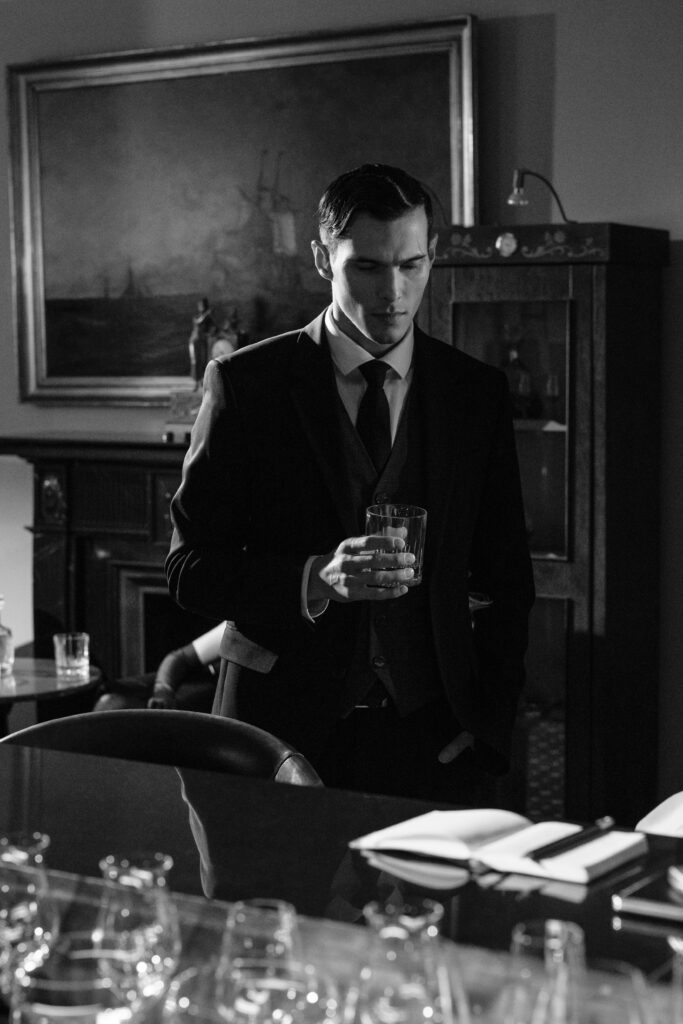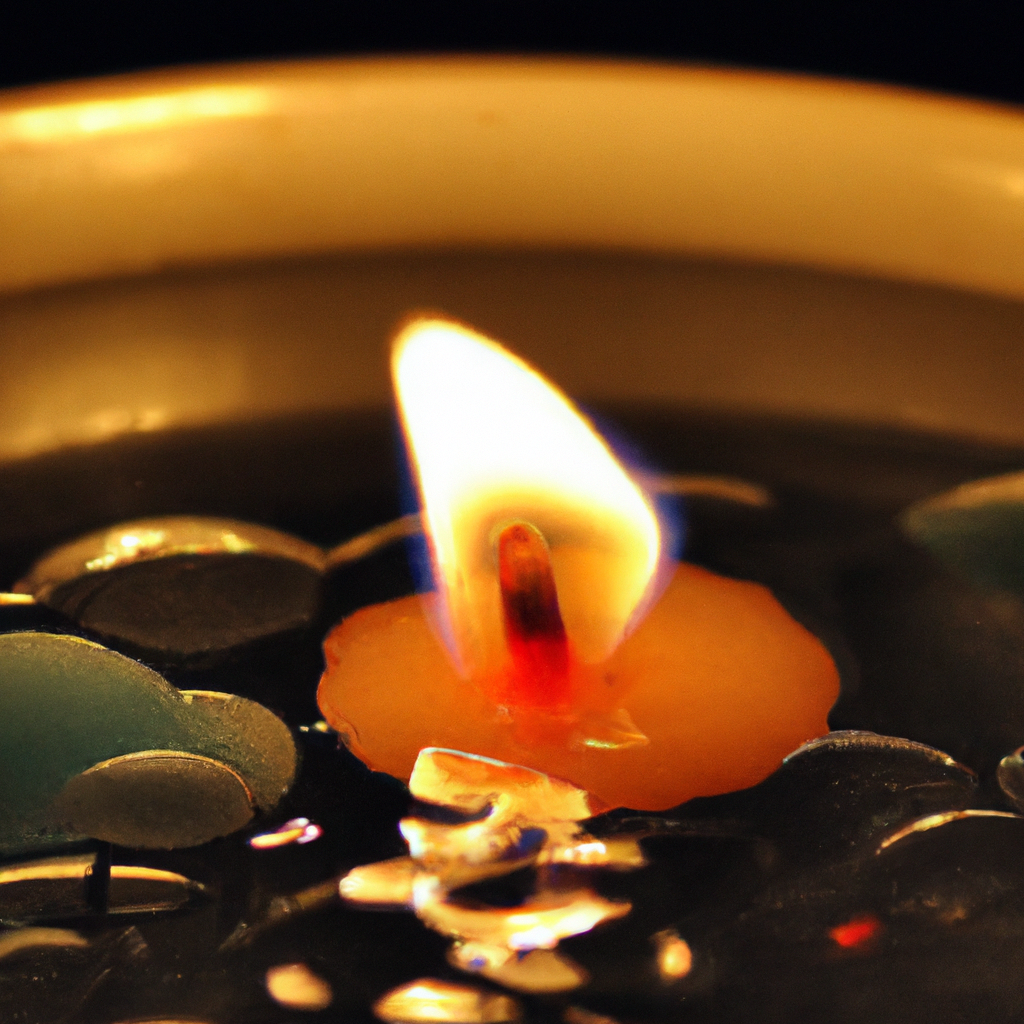Have you ever wondered if it’s possible to boil water with just a candle? Well, it turns out, it can be done! In this article, we will explore the fascinating concept of boiling water using nothing but a simple candle. We’ll take a closer look at the science behind it and unveil the step-by-step process to achieve this impressive feat. So grab a cup of tea and get ready to learn something truly captivating!

Understanding the Candle
What is a candle?
A candle is a cylindrical piece of wax or other solid fuel, with a wick running through the center. It is commonly used for illumination, fragrance, and decorative purposes. Candles have been used for thousands of years, and they continue to be a popular and versatile lighting option in homes, events, and religious ceremonies.
Components of a candle
A typical candle consists of three main components: the wick, the wax, and the flame. The wick serves as the pathway for the fuel to be drawn up from the base and vaporized by the heat of the flame. The wax, usually made of paraffin or beeswax, is the fuel that sustains the combustion process. The flame, the result of the ignited vaporized fuel, is the source of light and heat.
How does a candle work?
When a candle is lit, the heat from the flame melts the wax near the wick. This liquid wax is then drawn up the wick via capillary action, where it is vaporized by the heat of the flame. The vaporized fuel combines with oxygen from the air and undergoes combustion, creating the luminous flame we associate with candles. As the wax is consumed by the flame, the process repeats, allowing the candle to continue burning until all the wax has been used up.
Heat Transfer
Understanding heat transfer
Heat transfer is the movement of thermal energy from one object or system to another due to a temperature difference. In the context of a candle, heat transfer is crucial for the successful generation of heat. There are three main modes of heat transfer: conduction, convection, and radiation.
Conduction
Conduction is the transfer of heat through direct contact between two objects or substances. In the case of a candle, conduction occurs between the flame and the wick, where the heat is conducted through the wick to the surrounding wax. This heat transfer process helps to melt the wax and maintain the flame.
Convection
Convection is the transfer of heat through the movement of a fluid, such as a gas or liquid. When a candle burns, the surrounding air near the flame becomes heated and expands. This hot air then rises, creating a convection current. As the hot air moves away from the flame, it is replaced by cooler air, which further contributes to the combustion process.
Radiation
Radiation is the transfer of heat energy through electromagnetic waves. When a candle burns, it emits visible light and infrared radiation. The infrared radiation, also known as heat radiation, is responsible for transferring heat energy to nearby objects or surfaces, including the water in an experiment.
Boiling Water
What is boiling?
Boiling is the process in which a liquid reaches its boiling point and undergoes a phase change from a liquid to a gas. It occurs when the vapor pressure of the liquid exceeds the atmospheric pressure. In the case of water, the boiling point is 100 degrees Celsius (212 degrees Fahrenheit) at standard atmospheric pressure.
Requirements for boiling
To achieve boiling, several conditions must be met. Firstly, the liquid must reach its boiling point, which is the temperature at which it changes into a gas. Secondly, the atmospheric pressure must be equal to or lower than the vapor pressure of the liquid. Finally, heat must be continuously supplied to the liquid to maintain the boiling process.
Boiling point of water
The boiling point of water is influenced by external factors such as altitude and the presence of impurities. At higher altitudes, where the atmospheric pressure is lower, water boils at temperatures lower than 100 degrees Celsius. Additionally, impurities in the water, such as dissolved salts or minerals, can elevate the boiling point of water.
Boiling Water with a Candle
Can a candle generate enough heat?
While candles are primarily used for illumination, they can generate a certain amount of heat. However, whether a candle can generate enough heat to boil water depends on various factors, such as the size of the candle, the efficiency of heat transfer, and the desired boiling time.
Factors affecting heat generation
The size of the candle and the amount of fuel it contains play a significant role in heat generation. Larger candles with more wax have a higher potential for heat output. Additionally, the composition of the wax can also impact the heat generated by the candle.
Efficiency of candle heat transfer
The efficiency of heat transfer from the candle to the surrounding environment and the water being heated also affects the overall heat generation. Factors such as the candle’s design, the proximity of the water to the flame, and the presence of a heat-conductive material can influence how effectively the candle’s heat is transferred to the water.

Experiment: Boiling Water with a Candle
Required materials
To conduct an experiment to boil water with a candle, you will need the following materials:
- A candle
- A heat-resistant container
- Water
- A thermometer
- A heat source for ignition (matches or a lighter)
- A stopwatch or timer
Procedure
- Fill the heat-resistant container with a measured amount of water.
- Place the container on a stable, heat-resistant surface.
- Position the candle close to the container, ensuring that the flame is underneath the container.
- Ignite the candle using a match or a lighter.
- Measure the initial temperature of the water using a thermometer.
- Start the stopwatch or timer to track the boiling time.
- Observe the boiling process and monitor the temperature of the water.
- Once the water reaches its boiling point, record the time taken.
Observations and results
During the experiment, observe the heating process and note any changes in the water’s temperature. Measure the time it takes for the water to reach its boiling point. Record any additional observations, such as the amount of wax consumed by the candle or the visibility of the flame throughout the experiment.
Limitations and Challenges
Candle size and heat output
One limitation of boiling water with a candle is the limited heat output of the candle itself. Small candles may not generate enough heat to raise the temperature of the water significantly or bring it to a full boil within a reasonable time frame. Consider using larger candles or multiple candles to increase heat output.
Time and energy consumption
Boiling water with a candle can be a time-consuming process, especially if the candle’s heat output is relatively low. The longer it takes for the water to reach its boiling point, the more energy and time are required. It may not be the most efficient method for boiling water if speed is of the essence.
Weather conditions
External factors such as wind or drafts can affect the efficiency of heat transfer from the candle to the water. Wind can cause the flame to flicker or be extinguished, reducing the heat output. Conduct the experiment in a sheltered area or use a protective cover to minimize the impact of weather conditions.
Alternative methods
While using a candle to boil water can be a fun experiment, there are more practical methods available. Electric kettles or stovetops are more efficient and reliable ways to boil water for everyday use. Candles may be better suited for ambiance, emergency situations, or outdoor activities rather than boiling significant amounts of water.

Applications and Uses
Emergency situations
In emergency situations where access to electricity or gas is limited, a candle can serve as an alternative heat source for boiling water. It can be particularly useful during power outages or when camping in areas without convenient cooking facilities.
Outdoor activities
When engaging in outdoor activities such as picnics or barbecues, candles can be used to heat water for making hot beverages or simple meals. They provide a portable and easy-to-use source of heat, especially in situations where traditional cooking equipment may not be available.
Camping and hiking
Candlelight camping can be a nostalgic and enjoyable experience. While candles may not be the most efficient method for boiling water, they can still contribute to the overall ambiance of a camping trip. They can be used for heating water for hydration, cooking small meals, or warming up in cold weather conditions.
Safety Precautions
Fire hazards
When working with candles, there is always a risk of fire hazards. Keep flammable materials away from the candle flame, and never leave a burning candle unattended. Use a designated, heat-resistant candle holder to prevent accidental tipping or falling.
Ventilation
Ensure that the area where the candle is being used has proper ventilation. Combustion produces carbon dioxide and other by-products, which can accumulate in an enclosed space. Always use candles in well-ventilated areas to prevent the build-up of potentially harmful gases.
Proper candle usage
Follow the manufacturer’s instructions and guidelines for safe candle usage. Trim the wick to an appropriate length, and avoid burning candles near flammable objects. Extinguish the candle when not in use, and do not touch or move a candle while it is burning or immediately after it has been extinguished.
Supervision in use
If conducting the experiment or using candles with children, ensure appropriate adult supervision. Explain the potential dangers associated with candle usage, and teach children how to handle candles safely. Monitor the experiment closely to prevent accidents or injuries.

Conclusion
In conclusion, while it is possible to boil water with a candle, it may not be the most efficient or practical method. Candles can generate heat through combustion and heat transfer, but their limited heat output and slow boiling time can make alternative methods more suitable for everyday use. However, candles can still serve as a valuable heat source in emergency situations, outdoor activities, and for creating a cozy ambiance. Remember to exercise caution and follow safety precautions when using candles to prevent fire hazards and ensure a safe environment.
